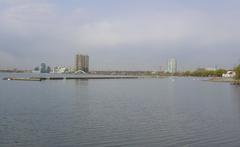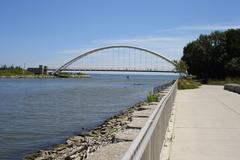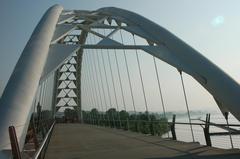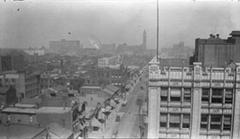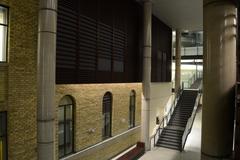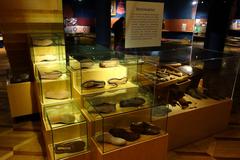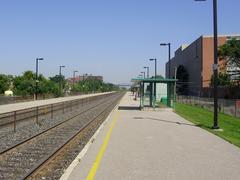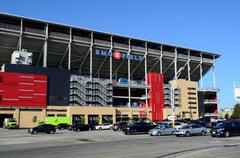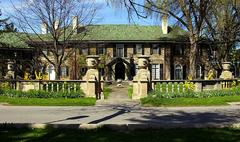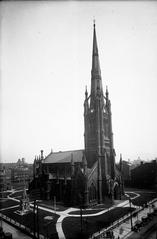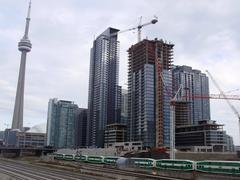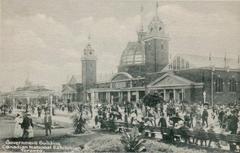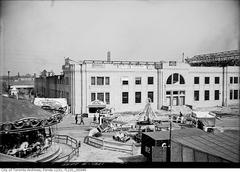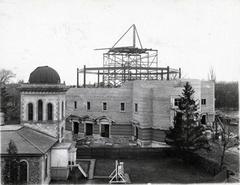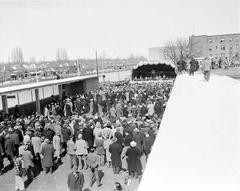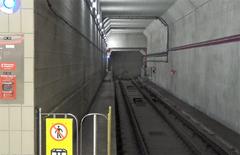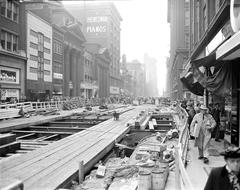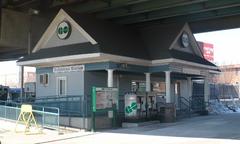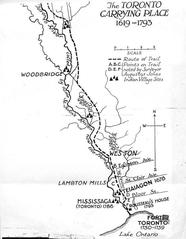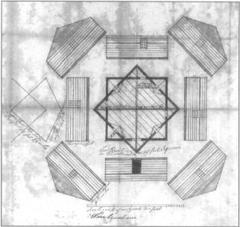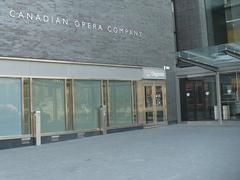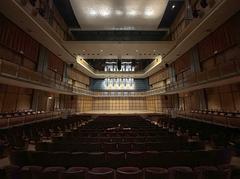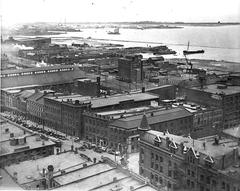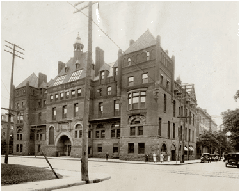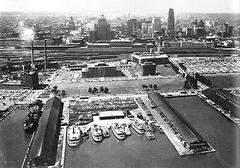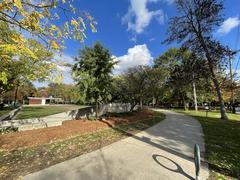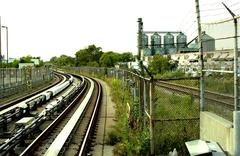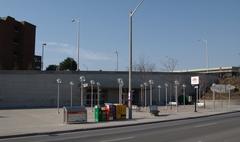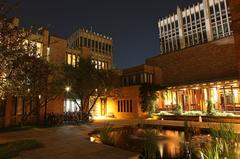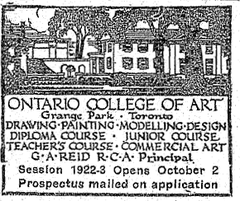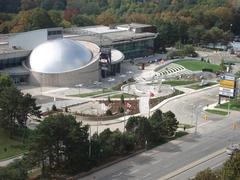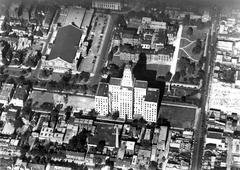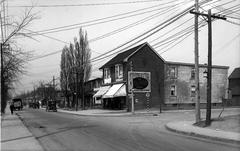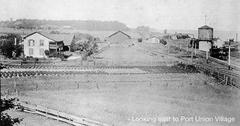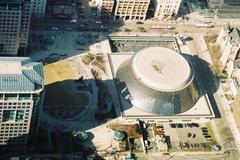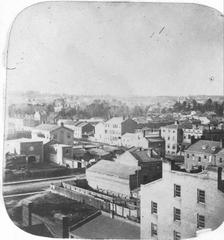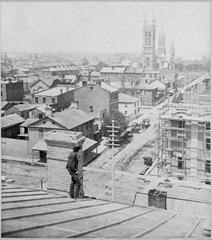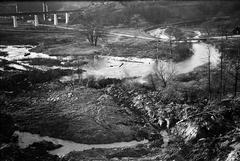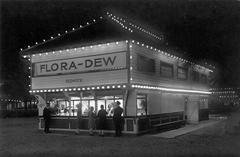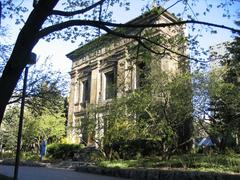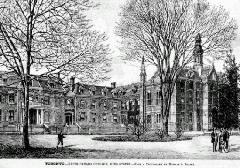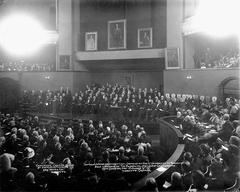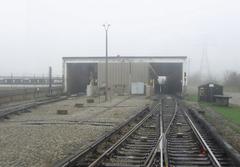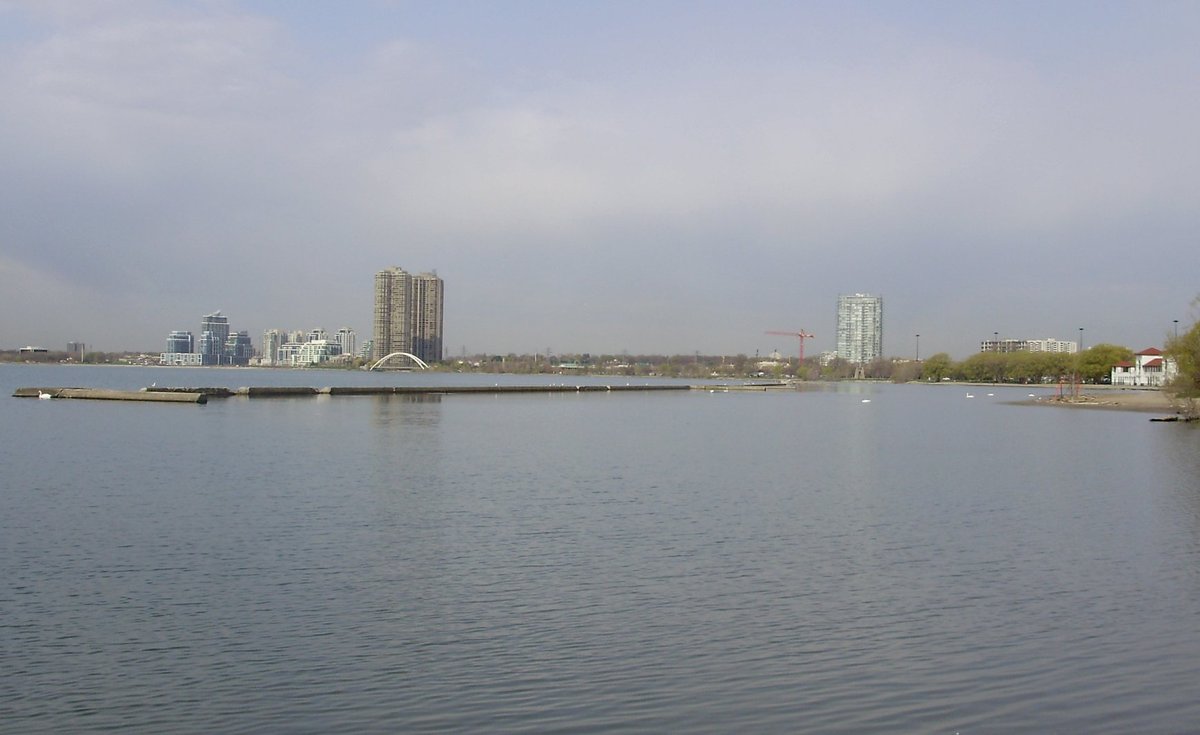
Comprehensive Guide to Visiting Humber Bay Arch Bridge, Toronto, Canada
Date: 18/07/2024
Introduction
The Humber Bay Arch Bridge, a landmark of modern Toronto, Canada, is not only a vital link in the city’s waterfront trail system but also a symbol of sustainable urban development. Known for its unique twin arches that elegantly span the Humber River, the bridge has become a popular spot for pedestrians, cyclists, and photographers. This guide delves into the history, design, cultural significance, and practical visitor information for the Humber Bay Arch Bridge, highlighting its role in connecting the eastern and western sections of the Martin Goodman Trail and its contribution to the city’s commitment to preserving the natural environment. Constructed between 1994 and 1996 by Montgomery Sisam Architects and Delcan Corporation, the bridge stands as a testament to innovative engineering and architectural beauty, earning it numerous accolades, including the Governor General’s Medal in Architecture (source, source, source).
Table of Contents
- Introduction
- Early Development and Planning
- Design and Construction
- Opening and Public Reception
- Cultural and Historical Significance
- Awards and Recognition
- Visitor Information
- Maintenance and Preservation
- Future Prospects
- Conclusion
- Frequently Asked Questions (FAQ)
- Call to Action
Early Development and Planning
The Humber Bay Arch Bridge was conceived as part of the larger revitalization efforts for Toronto’s waterfront, which began in the late 20th century. The planning for the bridge started in the early 1990s, driven by the need to improve pedestrian and cyclist connectivity along the waterfront trail system. The bridge was designed to span the Humber River, providing a crucial link between the eastern and western sections of the Martin Goodman Trail.
Design and Construction
The design of the Humber Bay Arch Bridge was the result of a collaboration between Montgomery Sisam Architects and Delcan Corporation, an engineering firm. The bridge’s design is notable for its twin arches, which rise 21.3 meters above the deck and span 139 meters across the Humber River. The arches are constructed from high-strength steel, while the deck is made of reinforced concrete. The bridge’s design was chosen for its aesthetic appeal and its ability to withstand the harsh weather conditions typical of Toronto.
Construction of the bridge began in 1994 and was completed in 1996. The project faced several challenges, including the need to minimize environmental impact on the Humber River, which is a designated Canadian Heritage River. To address these concerns, the construction team employed innovative techniques, such as using a temporary work platform to reduce disruption to the riverbed.
Opening and Public Reception
The Humber Bay Arch Bridge was officially opened to the public on June 25, 1996. The opening ceremony was attended by local dignitaries, community members, and representatives from the design and construction teams. The bridge was immediately praised for its striking design and its role in enhancing the connectivity of Toronto’s waterfront trail system.
Public reception of the bridge has been overwhelmingly positive. It quickly became a popular spot for pedestrians, cyclists, and photographers, thanks to its scenic views of the Toronto skyline and Lake Ontario. The bridge has also become a symbol of the city’s commitment to sustainable urban development and the enhancement of public spaces.
Cultural and Historical Significance
The Humber Bay Arch Bridge holds significant cultural and historical value for Toronto. It is located near the mouth of the Humber River, an area with a rich history dating back thousands of years. The Humber River was a vital transportation route for Indigenous peoples, including the Huron-Wendat and the Mississaugas of the Credit First Nation. The river later became an important route for European explorers and settlers.
The bridge’s location and design pay homage to this history. The twin arches are reminiscent of the traditional birchbark canoes used by Indigenous peoples, while the bridge’s alignment with the river reflects the historical importance of the Humber as a transportation corridor. Interpretive panels along the bridge provide information about the area’s Indigenous history and the river’s ecological significance.
Awards and Recognition
Since its completion, the Humber Bay Arch Bridge has received numerous awards and accolades for its design and engineering. In 1997, the bridge won the Governor General’s Medal in Architecture, one of Canada’s most prestigious architectural awards. The bridge has also been recognized by the Canadian Society for Civil Engineering and the Ontario Association of Architects.
The bridge’s design has been praised for its elegance and functionality. The use of high-strength steel and reinforced concrete ensures the bridge’s durability, while the open design of the arches allows for unobstructed views of the surrounding landscape. The bridge’s integration into the waterfront trail system has also been lauded as a model of sustainable urban planning.
Visitor Information
Visiting Hours and Accessibility
The Humber Bay Arch Bridge is accessible 24/7, making it an excellent spot for early morning jogs, afternoon strolls, or evening photography sessions. The bridge is fully accessible to pedestrians and cyclists, with ramps and smooth pathways ensuring ease of access for all.
Nearby Attractions
The Humber Bay Arch Bridge is nestled in a vibrant area with several attractions nearby. Visitors can explore the Humber Bay Park, which offers beautiful gardens, picnic areas, and bird-watching opportunities. The Martin Goodman Trail, which the bridge connects, is perfect for cycling and walking, offering stunning views of Lake Ontario and the Toronto skyline.
Photographic Spots
For photography enthusiasts, the Humber Bay Arch Bridge offers numerous picturesque spots. The arches themselves frame the Toronto skyline beautifully, especially during sunrise and sunset. The bridge also provides excellent angles for capturing the serene waters of Lake Ontario and the lush greenery of Humber Bay Park.
Maintenance and Preservation
Maintaining the Humber Bay Arch Bridge is a priority for the City of Toronto. Regular inspections and maintenance work are carried out to ensure the bridge remains in good condition. This includes routine cleaning, painting, and structural assessments. In recent years, the city has also undertaken efforts to enhance the bridge’s accessibility, including the installation of improved lighting and signage.
The bridge’s preservation is also important from an environmental perspective. The Humber River is home to a diverse range of wildlife, including several species of fish and birds. Efforts are made to minimize the impact of maintenance work on the river’s ecosystem, and the bridge’s design includes features to protect the riverbank from erosion.
Future Prospects
Looking ahead, the Humber Bay Arch Bridge is expected to continue playing a key role in Toronto’s waterfront development. Plans are in place to further enhance the surrounding area, including the creation of new parks and recreational spaces. The bridge will remain a central feature of these efforts, serving as a gateway to the city’s waterfront and a symbol of Toronto’s commitment to sustainable urban development.
Conclusion
In conclusion, the Humber Bay Arch Bridge is more than just a functional piece of infrastructure. It is a landmark that embodies the history, culture, and aspirations of Toronto. Its elegant design, historical significance, and role in the city’s waterfront revitalization make it a must-visit destination for residents and tourists alike. For more information, you can visit the City of Toronto’s official website.
Frequently Asked Questions (FAQ)
Q: What are the visiting hours for the Humber Bay Arch Bridge?
A: The bridge is accessible 24/7.
Q: Is there an entrance fee to visit the Humber Bay Arch Bridge?
A: No, visiting the bridge is free of charge.
Q: Are there guided tours available for the Humber Bay Arch Bridge?
A: Currently, there are no official guided tours, but the bridge is part of the Martin Goodman Trail, which offers a self-guided experience.
Q: What are some nearby attractions?
A: Nearby attractions include Humber Bay Park, the Martin Goodman Trail, and stunning views of Lake Ontario.
Q: How can I get updates about events and news related to the bridge?
A: You can follow the City of Toronto’s official website and social media channels for updates.
Call to Action
Download the Audiala mobile app for more information on Toronto’s historical sites, including the Humber Bay Arch Bridge. Check out other related posts on our blog and follow us on social media for the latest updates and travel tips.
